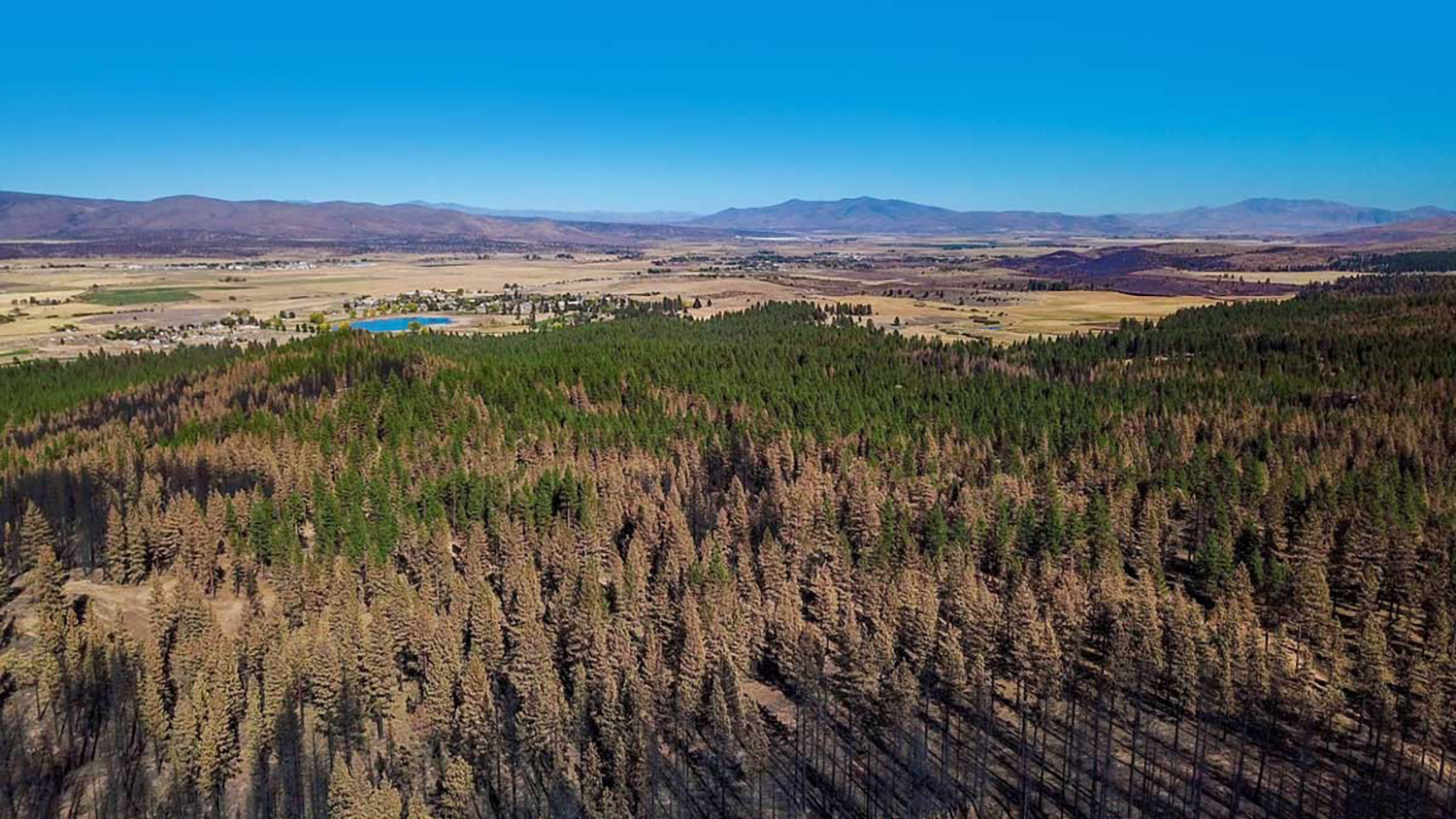Project Implementation in High-Risk Regions – Sierra Nevada
Department: Sierra Nevada Conservancy
Program Description: The Sierra Nevada Conservancy’s (SNC) Watershed Improvement Program (WIP) stewards the 27-million-acre Sierra-Cascade region that contains 44 percent of the state’s overall elevated or extreme fire risk. The Sierra-Cascade region sources 80 percent of California’s water and more than 72 percent of the region is in a high-risk fire zone.
Effective at using science-based management and building community coalitions, the SNC’s WIP supports efforts to restore resilience to the forested landscapes and communities of the Sierra-Cascade.

The burn severity of the 2020 Sheep Fire decreased as it burned into areas where the SNC, and others, funded Lassen Fire Safe Council forest-health treatments, helping to protect the city of Susanville. Creating shaded-fuel breaks in the wildland-urban interface that benefit both community and forest resilience is an example of the kind of multi-benefit projects prioritized by SNC’s WIP.

The forest floor near a Quincy, CA neighborhood is marked by only mild fire effects, like burnt grasses and lightly charred tree trunks, two months after the deadly 2020 North Complex Fire. The area was treated under an SNC WIP grant that helped to create a 2.5-mile-long buffer of fire-resilient forests along Quincy-La Porte Rd. Fire suppression officials credited this buffer for the successful defense of all homes in the area.

A portion of the 2022 Oak Fire footprint. The green trees in the foreground are on the ranch of a private landowner with a long history of active management, including the SNC-funded Clarks Valley Wildfire Reduction Project. Elsewhere, the Mariposa County fire burned almost 20,000 acres in mostly damaging ways—destroying more than 200 structures and leaving high-severity impacts across nearly 60 percent of its footprint.
Watershed Improvement Program grants have proven their value in reducing wildfire risk in recent fire seasons. SNC-funded projects helped to protect Susanville from the 2020 Sheep Fire, the town of Quincy from the North Complex Fire, and Lassen National Park facilities from the 2021 Dixie Fire. These grants also had beneficial impacts during the 2021 Caldor Fire where SNC had supported a prescribed burn in the Caples watershed several years prior which helped save that forest when the Caldor Fire swept through. Grants also supported the Fire Adapted 50 project that protected communities like Sly Park and Pollock Pines during the Caldor Fire.
The SNC’s current Wildfire Recovery and Forest Resilience Grant Program prioritizes the planning and implementation of forest health projects in high-risk regions to create more resilient landscapes, reduce wildfire risk, and accelerate recovery from recent wildfires.
Program Impact: Over the past two years the SNC has approved more than $36 million in grants for wildfire recovery and forest resilience projects. The 33 projects funded will complete wildfire resilience treatments on nearly 18,000 acres, replant more than 9,000 acres damaged by recent wildfires, and create thousands of acres of shovel-ready projects through fuel-reduction planning and prioritization efforts that will be conducted on approximately 565,000 acres across the Sierra-Cascade region.
The SNC opened a second $36 million round of wildfire recovery and forest resilience grants in June 2022. In response, SNC received approximately $89.5 million in project proposals. The SNC has completed its review of proposals and is moving forward with recommendations to award all remaining funds by June 2023.
Resilience in Action: The $20 million in 2021 Early Action funding provided to the SNC was distributed within three months of receipt to 15 shovel-ready wildfire resilience projects. Two of those projects are complete and are already protecting communities, watersheds and a hospital in the Sierra-Cascade region. Work is well underway on others, including projects that were impacted by the record-shattering 2021 wildfire season. Some, like the Thompson Peak Initiative-Bootsole Project in the Plumas National Forest, have been able to adapt treatment plans to take advantage of areas that did not burn at damaging high severity to build resilience.

Strategically located on a ridge separating the Merced River and Tuolumne River watersheds, the Wagner Ridge Fuel Break Project(video) expanded and widened a shaded fuel break to 400 feet. The fuel break will help with future firefighting efforts to keep a fire from crossing from one critical watershed to the other. The Wagner Ridge Fuel Break Project was funded in July 2021 with Early Action funding and was completed in Fall 2022.

